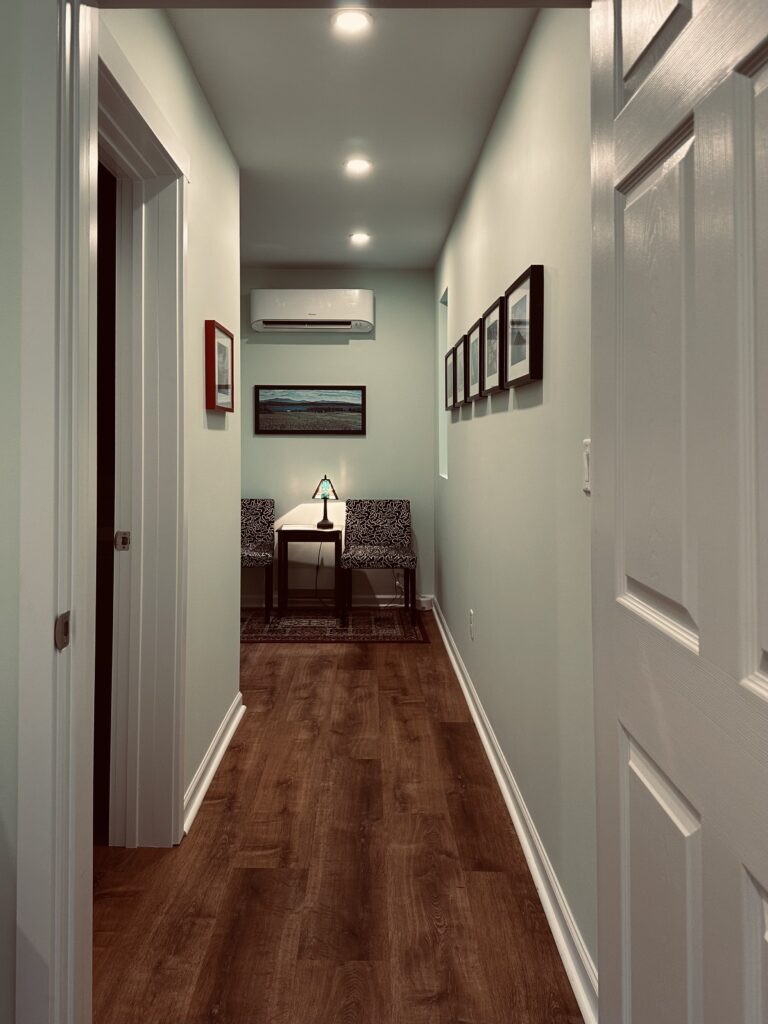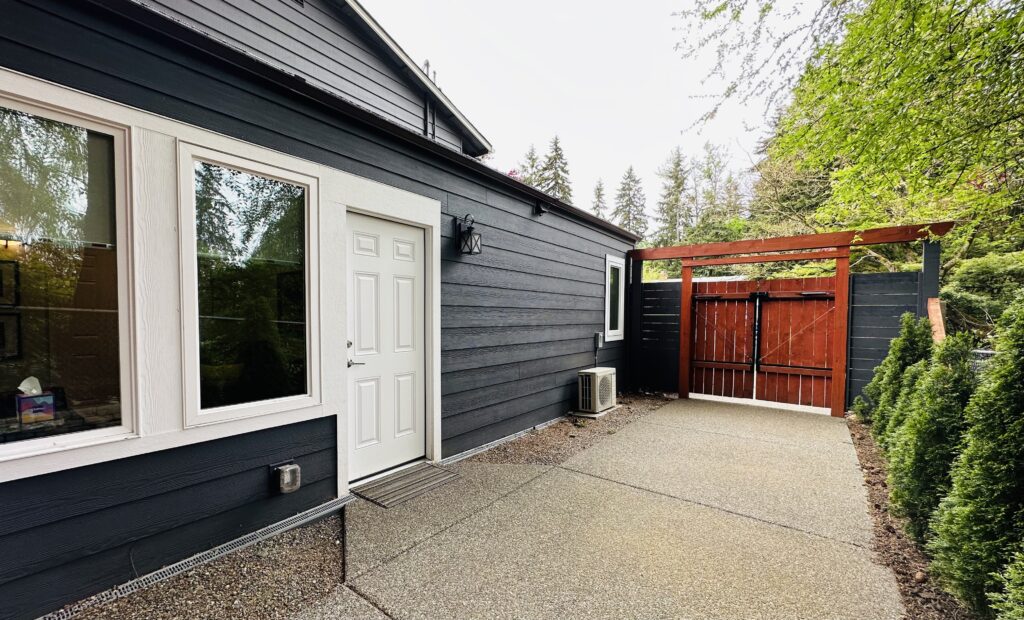Clinical Psychology
Enika Cocoli Bowen
Do you need to talk about what is going on in your life?
To work through it?
This is a good place to start. I have a few available hours and nearly 30 years of experience in the mental health field. We will focus on anything that is on your mind and will explore how to best go forward, so that you can return to your daily life with more confidence and happiness. Here are some things to consider. After an introductory call, we meet in person in my private office, where we first discuss your confidentiality and its limits. Next, we discuss other “housekeeping” matters, such as payment, insurance vs private pay, and cancellation policy. I give you as much time as you need to ask any questions and address all your concerns. Then, we begin the therapeutic work, by gradually settling into the rhythm of conversations, explorations, and discoveries. For virtual therapy, the same applies, except the in-person meeting.

Waiting room

Therapy room

Gated courtyard exit
Frequently Asked Questions
What is your session frequency?
Ideally, twice a week. Often once a week. Less than once a week is not recommended (too much time in between session and not enough time in just one session to engage it all).
Fee
$175 / session
A lower fee can be negotiated for students, veterans, and for higher than weekly frequency.
I can also provide you a statement called “superbill” that you can submit to your insurance for potential reimbursement. Depending on your insurance plan, you may get reimbursed 40-60% of the allowed rate.
Why the cost?
It is a matter of value, and not only cost. Mental wellbeing is always with you and no one can take it away from you, no matter what. Thinking well, being grounded, and not overwhelmed can last a lifetime and it is never earned at a “bargain” price.
What is your cancellation policy and can I reschedule a session?
The cancellation policy is 24-hour advance notice.
Yes, we can reschedule cancelled or missed sessions, as long as both your schedule and mine allow.
Who do you work with?
Adults.
Things to consider…
Sometimes people call me to schedule an “assessment.” Sometimes they seek “therapy.” Sometimes they seek “counseling.” I have described the difference between “therapy” and “counseling” on my homepage in the brief video, along with other differences, such as that between a psychologist and a psychiatrist.
Here, I write about another difference, that between “assessment” and “therapy.” The two types of assessment, “simple” and “complex,” are laid out in the Assessments page of my website and you can visit it to see the differences. However, there is one more thing that must be considered. If you are looking for a formal assessment, which includes psychological testing, in addition to a diagnostic evaluation that is followed by psychotherapy, I am trained to provide both, but not to the same person. In other words, if I perform a formal psychological assessment, I may refer you to psychotherapy and may make recommendations about a psychotherapist, but I do not become the treating psychotherapist after the evaluation. If you have had an assessment in another setting, say, in a school setting, or in a hospital, then I welcome the findings of the assessment, and we may begin psychotherapy together.
Key points
- Assessment and therapy are not done by the same provider.
- The goals of an assessment and the goals of therapy are slightly different, hence, the rationale for not having the same provider providing both.
- We can discuss each situation in order to arrive at the best solution for you.
AI Therapy Psychotherapy
One more point. With the rise of AI and chatbots, you may have already encountered the idea of “therapy” on the internet that is provided by the so-called AI therapist. There is a key point to consider: While many of these platforms claim to provide therapy, the difference between those devices and talking to a live person is often described as the difference between “therapy” and “psychotherapy.” The former can be offered by the AI devices and platforms as a model of probabilities and predictions based on large algorithms. The latter, psychotherapy, is performed by a licensed professional, with ongoing contact with people in real life situations and with genuine human empathy and understanding. “Therapy” is, in other words, a generic term. “Psychotherapy” is a science and an art that is practice by a living, breathing human person.
IF YOU ARE NERVOUS about this process, it may help to know that it is common and expectable. New experiences may make us nervous, but getting used to them and mastering them is a fruitful enterprise. It is quite amazing how capable the human mind is, including overcoming this initial nervousness. Fundamentally, the therapeutic space is your space. Let’s find its health and beauty!
THROUGH NEARLY 30 YEARS of experience, I have found that the best way to help you and help yourself is to bring together all areas of your life in the fullest view and most complete picture. This may take some time and therapy done this way is not a quick fix.
THE MOST BEAUTIFUL FEATURES of the human mind are its ability to study itself and its strength to tackle every issue that comes to its attention, whether a transitory event, a big trauma, or a mental health diagnosis. Different issues require different attention; however, strengthening your mental and thinking capacities has the potential to lift all symptoms and bring about improvements you can count on.
Appointments
(206) 321-9392
ecocolibowen@gmail.com
